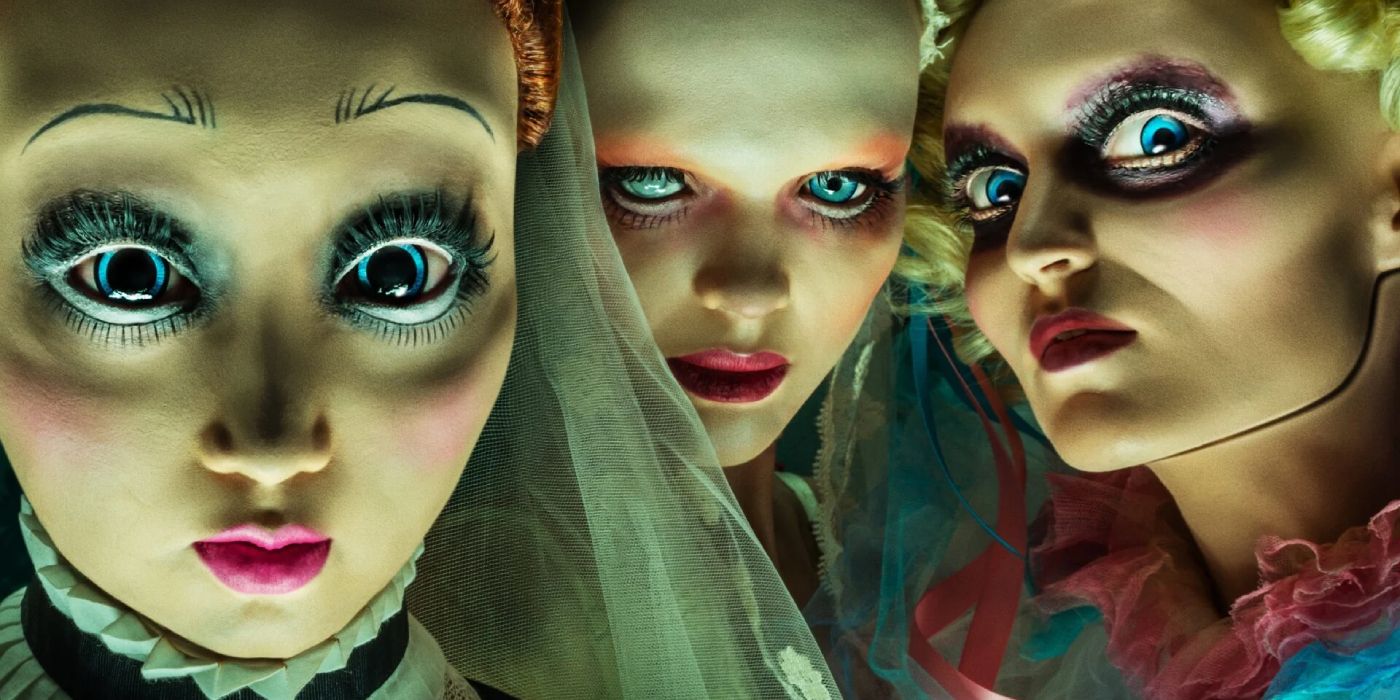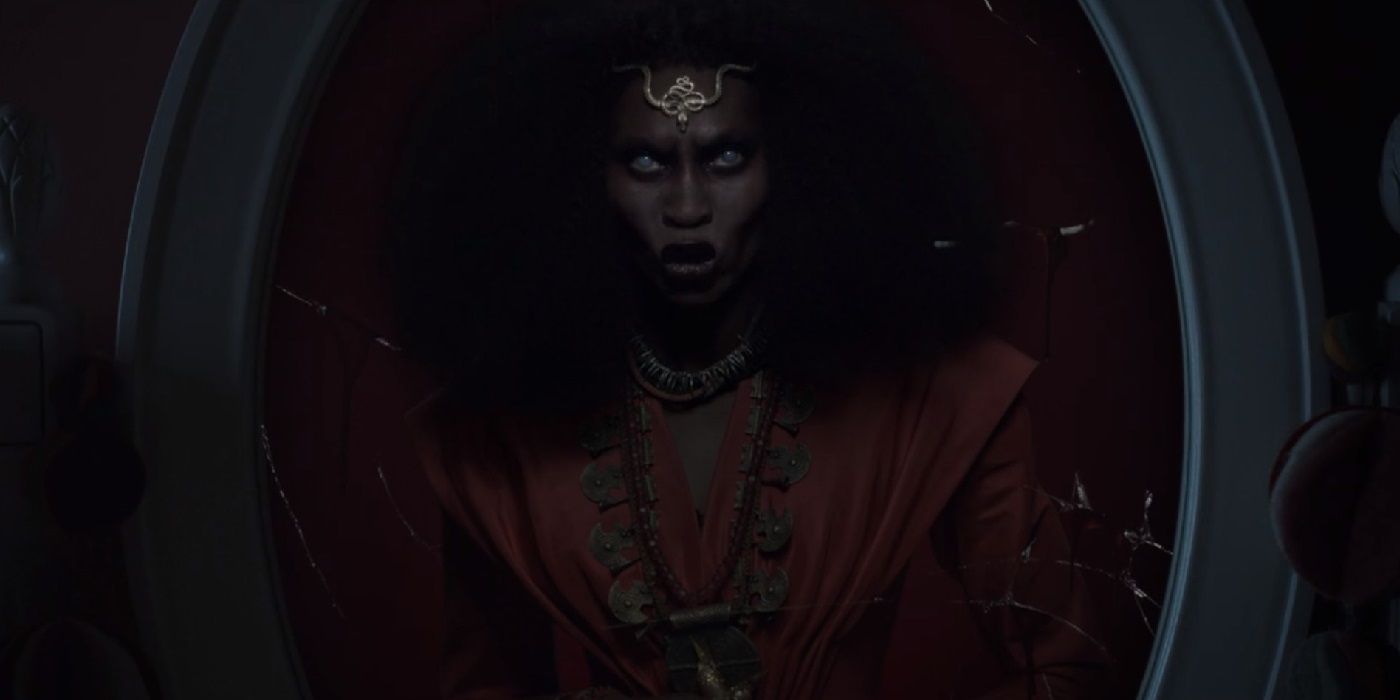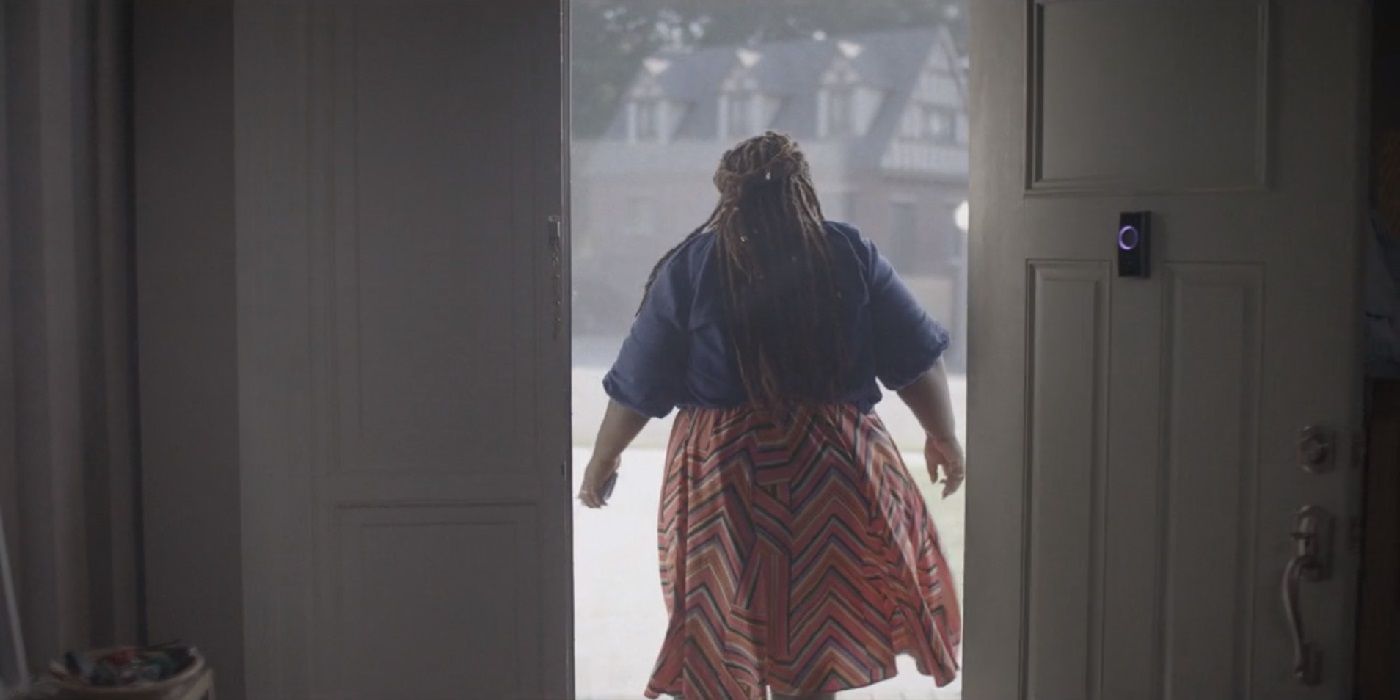The following contains spoilers for the first season of American Horror Stories, currently streaming on Hulu.
From the beginning, the American Horror Story franchise has emphasized the first word in its title. The connection is sometimes more subtle than others, but it has always focused on stories -- and sins -- unique to the North American continent. That includes both real evils -- such as slavery -- and folklore and legends -- such as Season 6, "Roanoke." Over time, it has all evolved into its own mythology, and the franchise as a whole has become a formal stand-alone universe, but it hasn't strayed from those roots, a fact which has helped its spin-off anthology series American Horror Stories find its footing.
It wasn't easy. The first season of American Horror Stories struggled with the deliberate looseness of the anthology format, and often returned to the franchise's mythology when it ran out of ideas. Three of its eight episodes were set at the Murder House from Season 1, and while the rest of the show did better, the awkwardness hamstrung it throughout the initial run. Season 2 appears to have course corrected, in large part by utilizing American folklore and urban legends as a big part of its storytelling.
Anthology series are intended to be stand-alone, and indeed the original American Horror Story uses the format in season-wide arcs. Each new season tells an entirely different story, though crossovers have become increasingly common, such as the arrival of The Coven from Season 3 to prevent the end of the world in Season 8, "Apocalypse." The spin-off series emulates the same formula, only on an episode by episode basis.
The problem is that such episodes often feel disconnected and -- in telling their own stories -- tend to distance themselves from the remainder of the AHS universe. The most successful episodes from Season 1 -- Episode 3, "Drive-In" and Episode 6, "Feral" come to mind -- have almost no connection to the larger franchise, and while their stories succeed, they make the universe itself looser and looser, and "Drive-In," in particular, can be hard to reconcile with the rest of the American Horror Stories timeline. The second season, on the other hand, has worked hard on tightening things up, and yet it also remains committed to telling self-contained stories that don't need viewers to know much about the rest of the AHS lexicon. With the exception of a brief coda in Season 2, Episode 1, "Dollhouse," every episode has refrained from mentioning other events in the franchise's continuity.
Instead, it's fallen back on urban legends and folktales to serve as an underlying thread. The two biggest examples have made no bones about their sources. Episode 3, "Drive," openly riffs on the "Killer in the Backseat" legend, in which a motorist is seemingly threatened by another driver who is actually trying to warn them about a murderer in the back seat of their car.
Similarly, Episode 5, "Bloody Mary," plays on the well-known ghost story about reciting words in a mirror to summon a vengeful spirit. While Episode 2, "Aura," and Episode 4, "Milkmaids" are original, they both emulate that style of storytelling, too. "Aura" in particular has literal ghosts and feels very much like an internet-created urban legend of the Slenderman variety. That's kept most of the first five episodes sharp and spooky.
It's also taken care to keep its urban legends American, which further connects it to the tone of its parent franchise without formal narrative links. "Bloody Mary," for instance, has nothing to do with Mary Queen of Scots, but rather Mary Worth -- an urban legend from the Chicago area about a woman who used the Underground Railroad to recapture escaping slaves. Similarly, The Encyclopedia of Urban Legends traces the Killer in the Back Seat story to notes gathered by Indiana University students in the 1960s. American Horror Stories takes care to put its own flourish on them, but never ranges into other countries to find its source material.
Feminist horror has been another common theme for American Horror Stories this season, something it shares with its parent series, but which is sufficiently generalized to provide a connecting thread, but the use of urban legends has provided it with focus that it lacked before now. The trend has been invaluable, and aided the spin-off in finding its own lane in its shared universe. Hopefully, it will continue as the two season enters its last few episodes, and carry it on into a third.
New episodes of American Horror stories stream every Thursday on Hulu.



